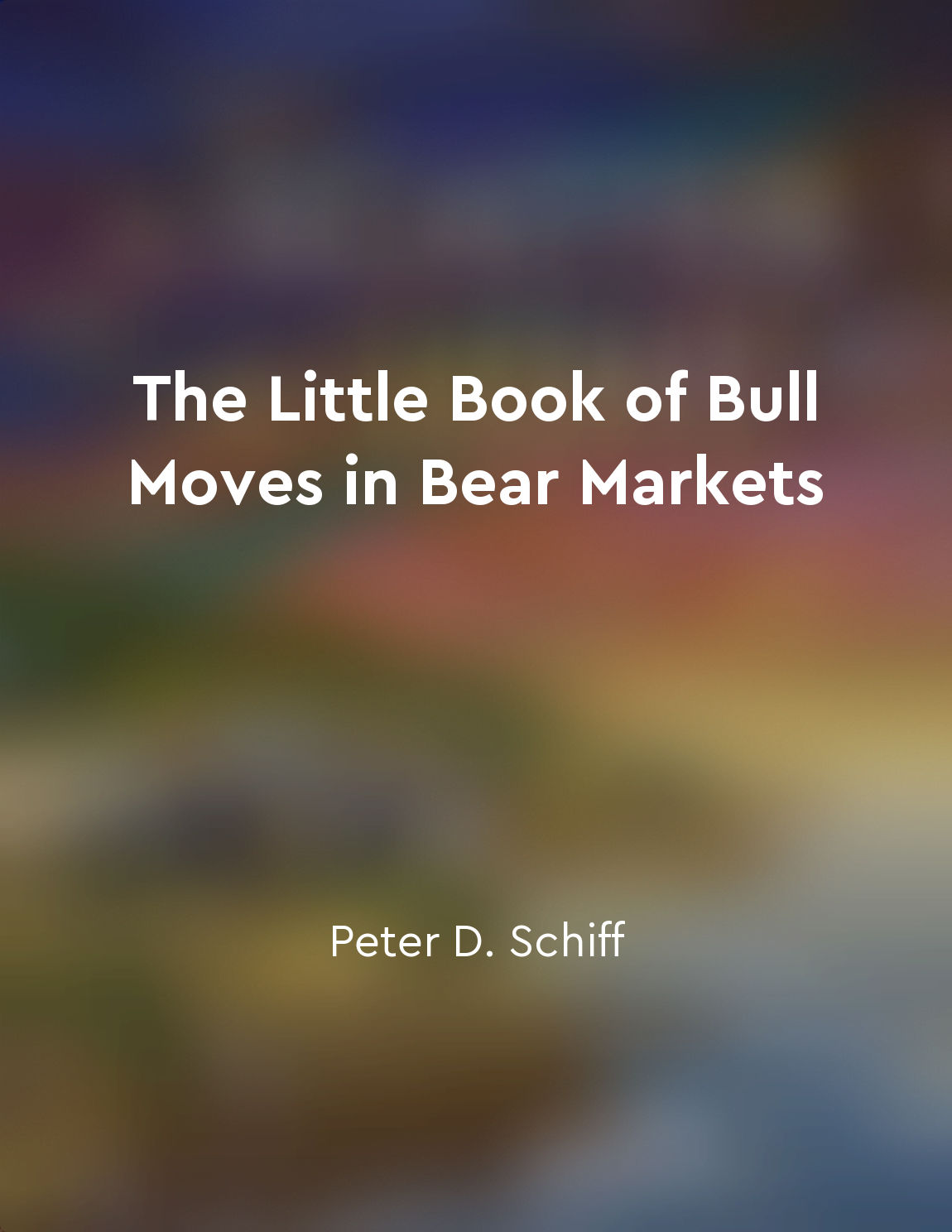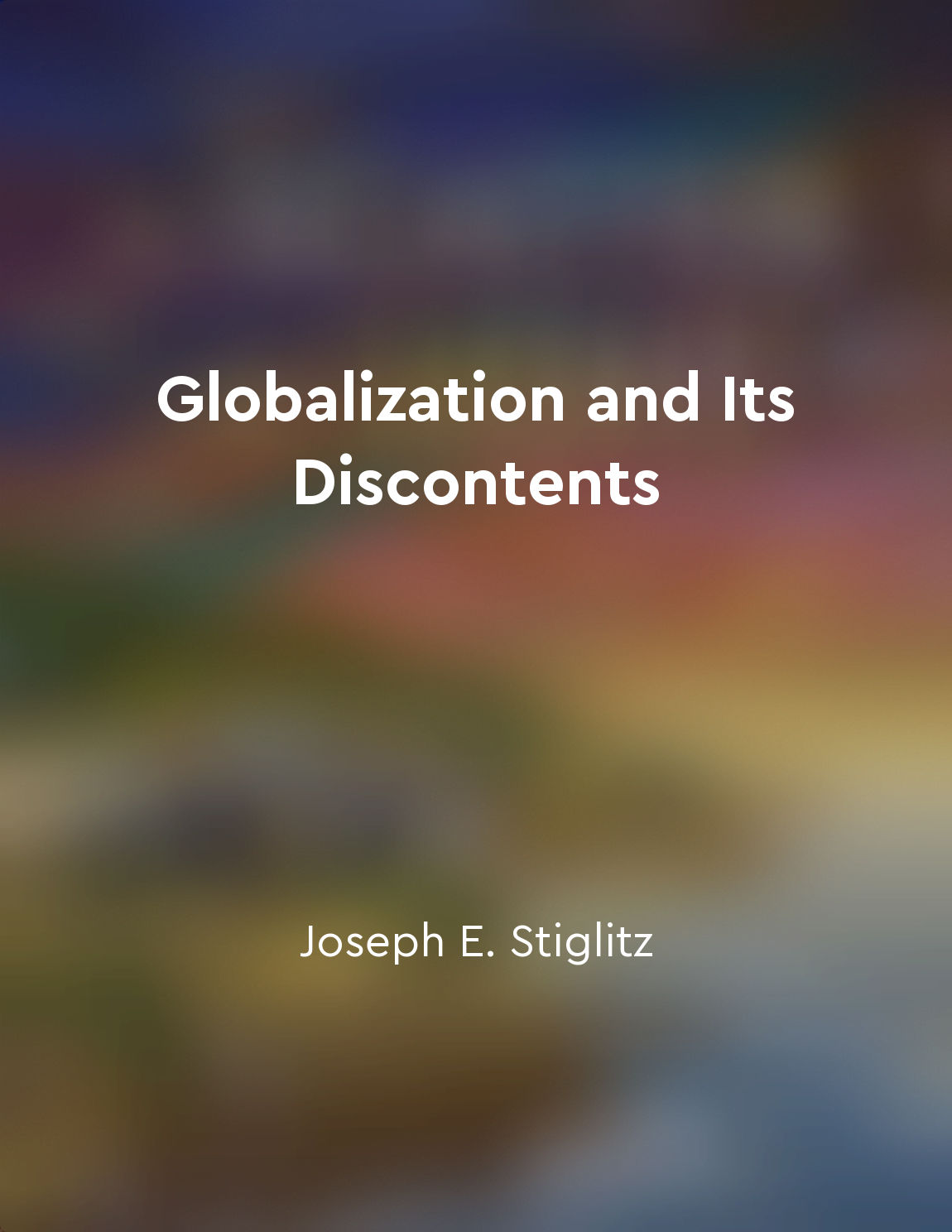Asset bubbles lead to misallocation of resources and economic distortions from "summary" of A Short History of Financial Euphoria by John Kenneth Galbraith
Asset bubbles are a common occurrence in financial history, characterized by the rapid escalation in the prices of certain assets beyond their intrinsic value. This euphoric rise in asset prices often leads to a misallocation of resources, where capital is diverted towards speculative investments rather than productive endeavors. As John Kenneth Galbraith astutely observes, the allure of quick profits in a booming market can distort economic decision-making, causing investors to overlook the long-term implications of their actions. The misallocation of resources during an asset bubble can have far-reaching consequences for the economy. Investment in overvalued assets may crowd out funding for more sustainable and beneficial projects, leading to a stagnation in overall economic growth. Galbraith notes that the focus on speculative gains can also create a false sense of prosperity, masking underlying weaknesses in the economy. When the bubble eventually bursts, the misallocation of resources becomes painfully apparent as capital is rapidly reallocated, often resulting in widespread financial distress and economic downturns. Moreover, asset bubbles can distort the functioning of financial markets, leading to inefficiencies and instability. The rapid rise in asset prices during a bubble can create a feedback loop, where investors purchase assets solely based on the expectation of further price increases. This herd mentality can drive prices to unsustainable levels, detached from fundamental economic realities. Galbraith highlights that the speculative frenzy during a bubble can amplify market volatility, increasing the risk of abrupt corrections and financial crises. In addition to distorting resource allocation and market dynamics, asset bubbles can also have broader societal implications. Galbraith warns that the euphoria surrounding a bubble can fuel irrational exuberance and excessive risk-taking, leading to a breakdown in prudence and financial discipline. The aftermath of a burst bubble often reveals the extent of the economic distortions and misallocations that occurred during the boom, underscoring the need for better regulation and risk management practices in financial markets.- The phenomenon of asset bubbles exemplifies the pervasive influence of irrational behavior and speculative excesses in financial markets. The misallocation of resources and economic distortions that accompany these bubbles serve as cautionary tales of the dangers of unchecked speculation and herd mentality. Galbraith's insightful analysis sheds light on the recurring patterns of financial euphoria and the enduring lessons that can be drawn from history's episodes of boom and bust.
Similar Posts
Equilibrium plays a crucial role in market stability
Equilibrium is a fundamental concept in economics. It represents a state where supply and demand are balanced, leading to stabl...
Types of significant subjects: long and short
In the world of significant subjects, there exist two distinct categories: long and short. These designations are not merely ba...
Price is what you pay, value is what you get
In the world of investing, it is crucial to understand the distinction between price and value. Price is simply what you pay fo...

Stick to your investment strategy during market turbulence
When the stock market is experiencing turbulence, it is crucial to remain steadfast in your investment strategy. It can be temp...
The value of Bitcoin comes from its ability to function as a medium of exchange, unit of account, and store of value
Bitcoin's value lies in its multifaceted role as a medium of exchange, unit of account, and store of value. As a medium of exch...
Economic development should be sustainable
Sustainable economic development is not just a trendy catchphrase or a passing fad. It is a crucial concept that we must take s...

Longterm economic trends can help predict market cycles
Long-term economic trends play a crucial role in shaping market cycles. By examining historical data and analyzing patterns tha...

Be open to alternative income sources
The idea of being open to alternative income sources is crucial during times of economic uncertainty. In a deflationary depress...

Globalization has led to the erosion of worker rights in many countries
Globalization has resulted in a race to the bottom in terms of workers' rights in many countries. As companies seek to cut cost...
Endowment effect makes investors overvalue assets they already own
The endowment effect is a psychological phenomenon that causes people to place a higher value on objects they already possess c...

